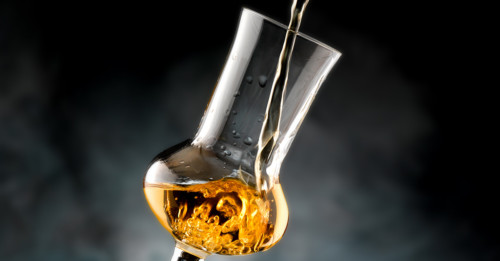Grappa Essential Info
- Color: Clear to light gold (aged)
- Region: According to the E.U., grappa should be produced in one of eight regions in Italy, but American distillers can technically use the term “grappa”
- ABV: 40-50% ABV
- Aged: Can be aged, often in oak, acacia, ash, or cherry wood casks; can be aged 1 year (vecchia), 18 months (riserva) or more
- Made from: Pomace, or grape skin, seed, and stem left over from winemaking
- Commercial Examples: Nonino, Storica Nera, Jacopo Poli, Candolini, Clear Creek (U.S.)
- Popular Cocktails: Not as prevalent, but often on after dinner/dessert drinks lists, e.g. Affogato Cocktail
There’s a reason grappa’s traditionally served in a tiny glass—it’s potent stuff. And that’s because it’s made from pomace, essentially the leftovers of winemaking—seeds, skins, and stems. It might have a rough reputation, but grappa’s actually an incredible form of drinking ingenuity: give us the waste products of one fermentation process, and we’ll turn it into another fermentation process.
Italian law dictates that the pomace must be distilled solid, with no added water. And the fact that it’s basically a distillate from leftovers means grappa lacks a lot of the nuance of say, a glass of red wine. Which is no doubt why the stuff’s been historically, and unfairly, categorized as harsh. The fact is, old school grappa might have been a bit harsh—it was a “poor man’s drink,” leftover, strong, no frills. But in the past several decades, grappa production has evolved to include single varietals (where 85% of the pomace is from one grape) and more sophisticated distillation methods. As with most distilling, the cheapest way to produce grappa is in a column, or continuous, still, but many grappas nowadays are made with both continuous and alembic, or batch, stills (which impart more congeners and flavoring compounds). What you can buy today will still be potent, but there’s a delicacy and a bouquet that accompanies the heat, really the essence of the grape skin that perfumes the sip.
